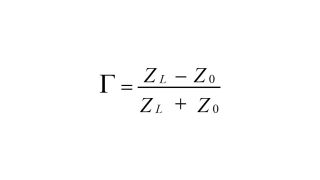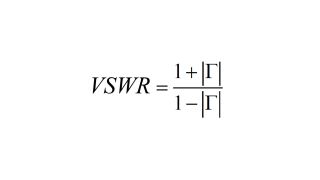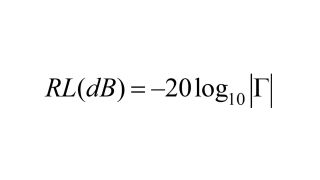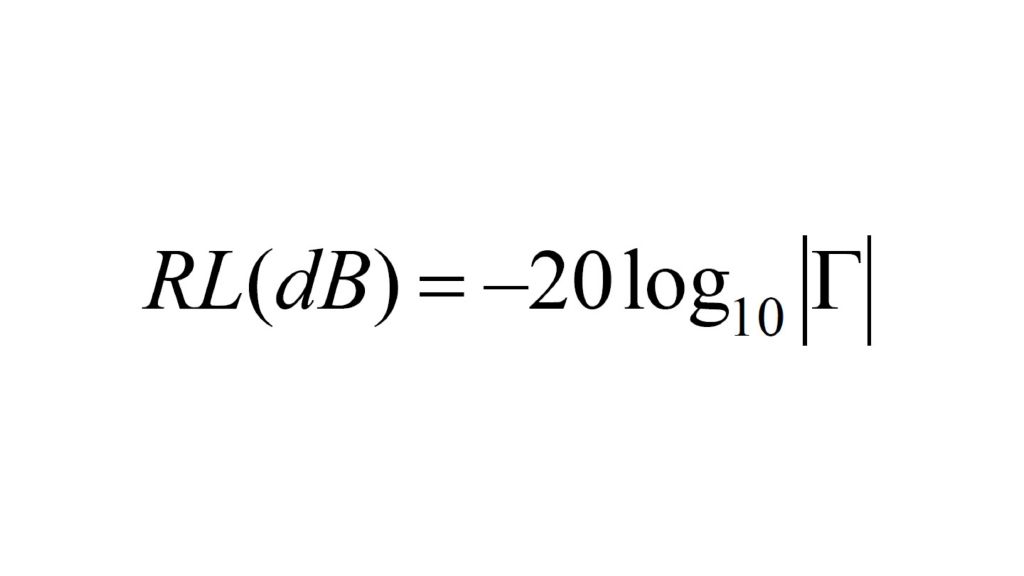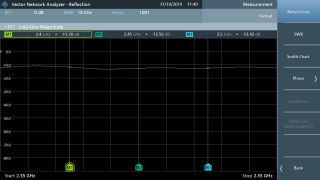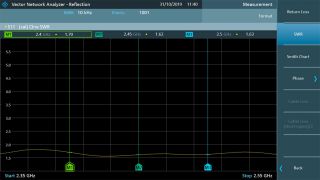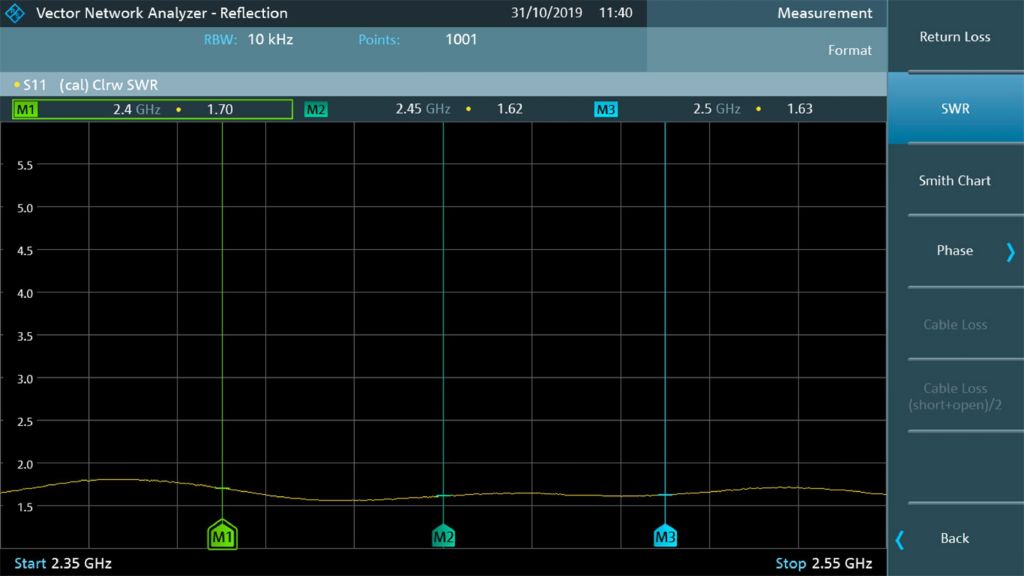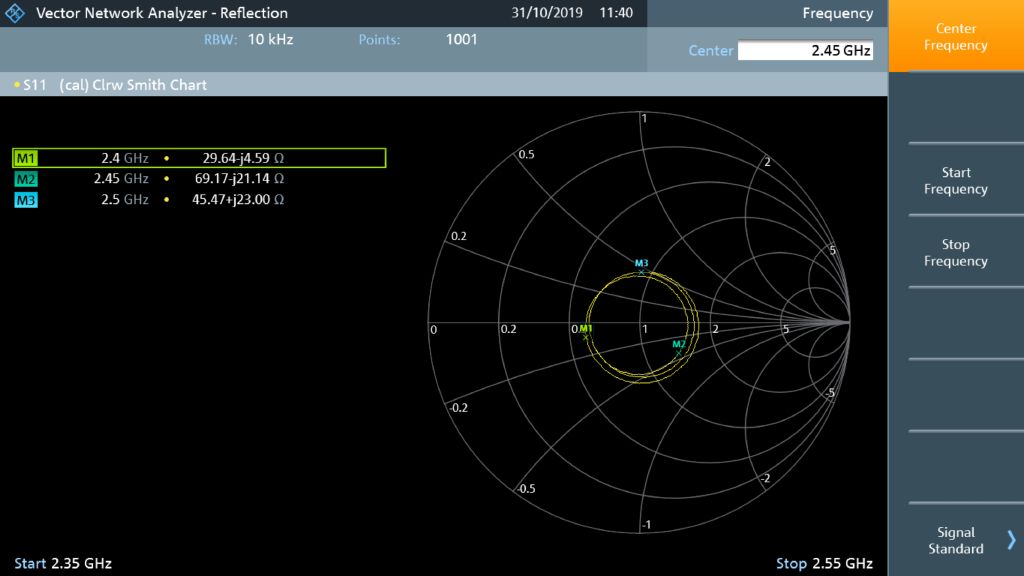Rohde & Schwarz solution
A simple way to achieve good impedance characteristics is by selecting proper components and verifying by measurement. This measurement is easiest done using a vector network analyzer (VNA) with a Smith chart display. The R&S®FPC1500 offers three times the value. It is not only a great, economical spectrum analyzer with an independent signal source. It is also a one-port vector network analyzer with integrated VSWR bridge. And the integrated Smith chart display and marker functions automatically convert normalized impedance to Ohms based on the selected impedance system.
Calibration at the measurement plane, i.e. the interface between the coupling network location and the network analyzer cables, is an extremely important step in order to compensate for the effects of cables and connectors. Manual calibration is error prone and time-consuming when the open-short-load standards are toggled manually. The R&S®ZN-Z103 calibration unit automates toggling the standards. This helps reduce connection error and reduces the calibration time to a few seconds.
First, set the measurement conditions (desired frequency range, resolution bandwidth and number of measurement points). Then connect the R&S®ZN-Z103 to the USB port of the R&S®FPC1500. The instrument automatically recognizes the calibration unit. Next, connect one end of the coaxial cable to the output port of the R&S®FPC1500 and the other end to the calibration unit. Press “Calibrate → Full 1-port“. The instrument is now calibrated and ready to examine the DUT.




